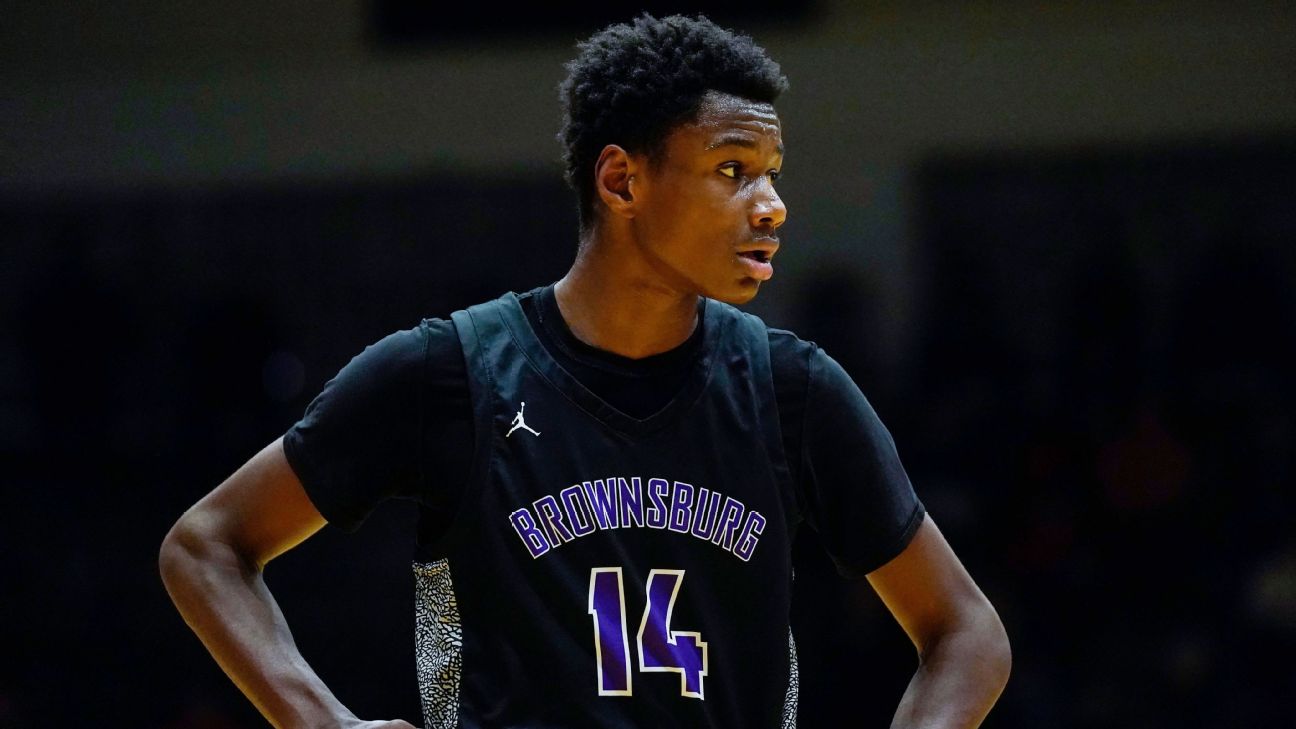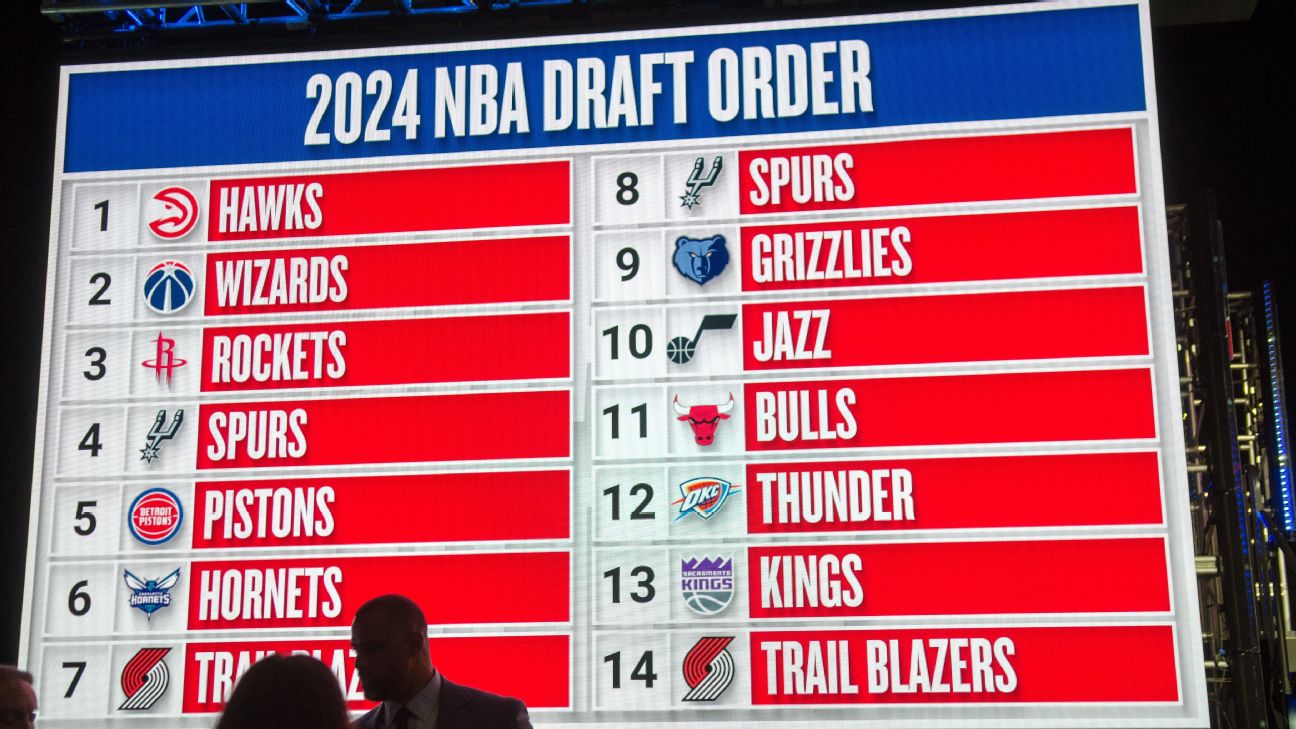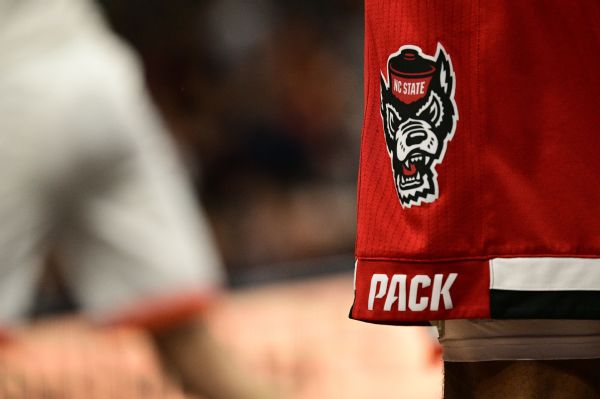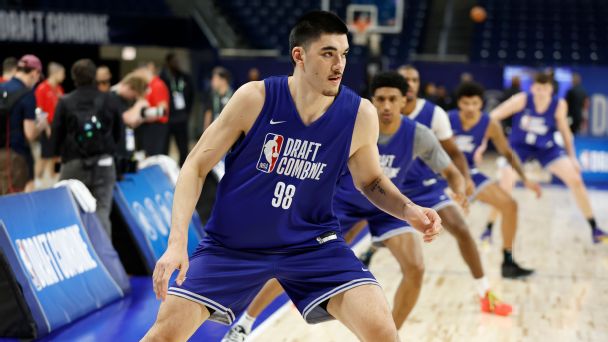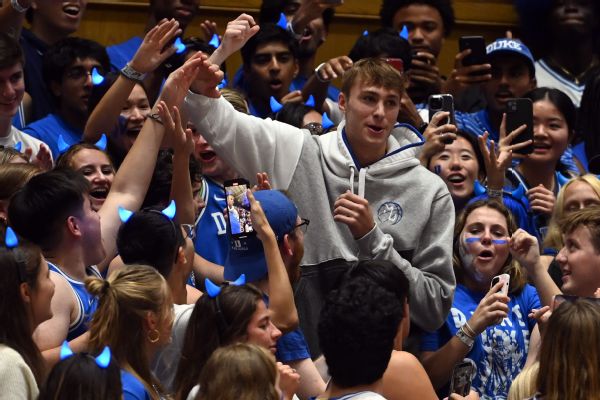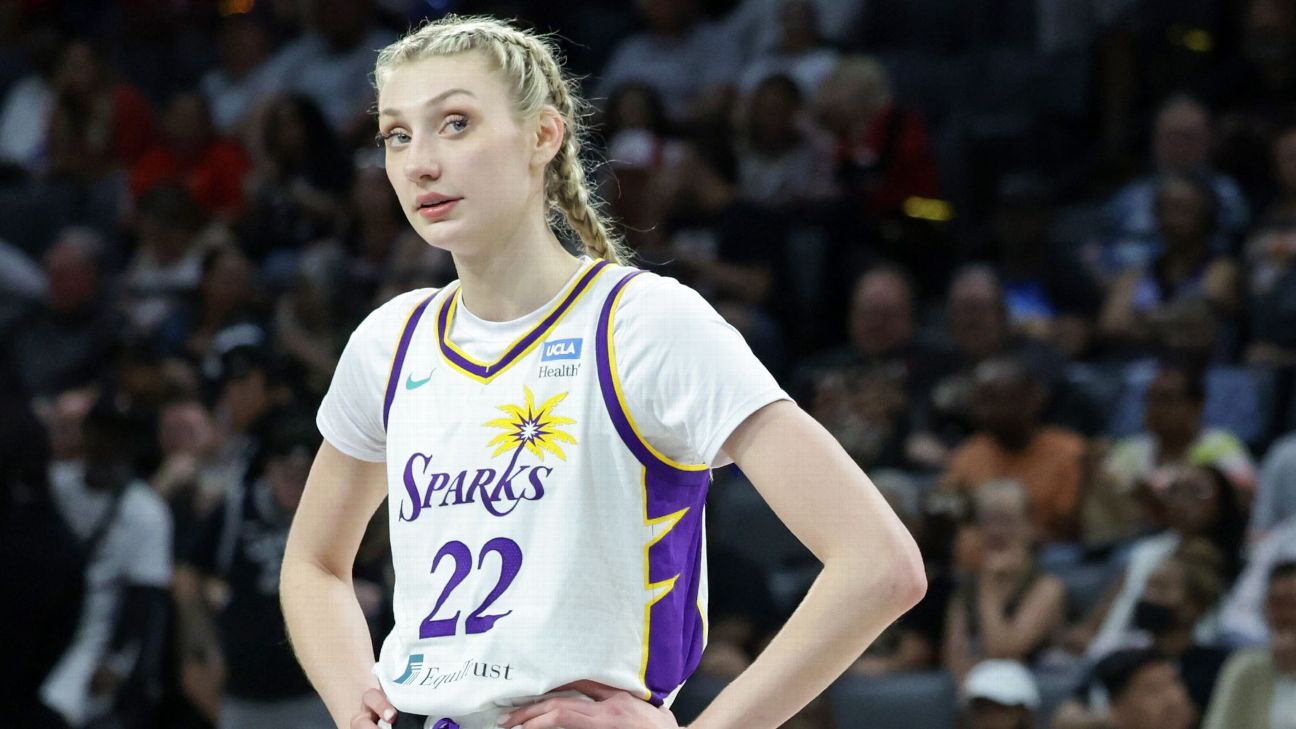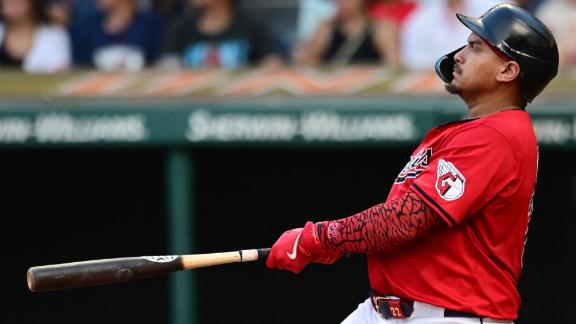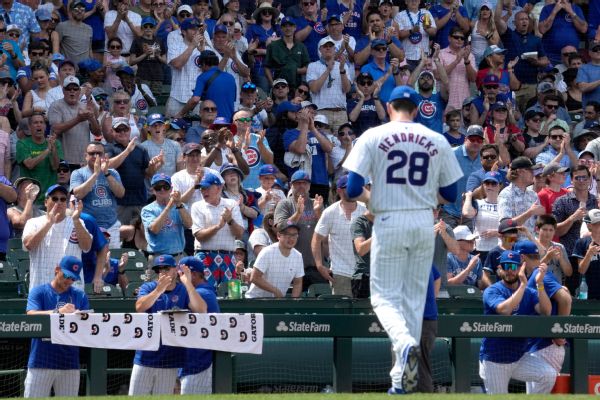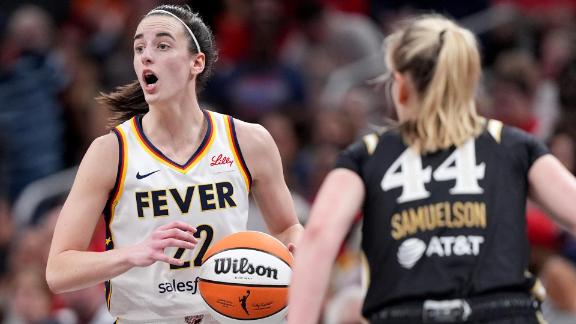![Luka Jrue [608x342]](https://a.espncdn.com/photo/2024/0522/r1336032_608x342_16-9.jpg)
Ian Happ and Dansby Swanson hit back-to-back homers as the Cubs hold off the Giants 6-5
As the NBA Finals near, all eyes are on the conference finals -- including those of the other 26 franchises looking to get to this point in the near future. The majority of the league's front offices have shifted into offseason mode, looking to either find the stars who can make them contenders or adding support with the right role players.
The NBA's most successful teams inevitably serve as templates for the rest of the league. That's particularly interesting this season, as both Western Conference finalists have built around their homegrown stars with risky trades and big payoffs, while the Indiana Pacers took advantage of injuries to the Milwaukee Bucks and New York Knicks in the Eastern Conference playoffs and by adding two-time All-Star Pascal Siakam at midseason.
It's notable what these rosters all lack: key players added through high-priced free agency.
Let's break down how each of the four remaining teams built their rosters and what it tells us about putting together a championship contender in the modern NBA.
Boston CelticsDraft: Jayson Tatum (2017, via BKN and PHI), Jaylen Brown (2016, via BKN), Payton Pritchard (2020) Trade: Derrick White (2022), Kristaps Porzingis (2023), Jrue Holiday (2023), Al Horford (2021) Free agency: Sam Hauser (2021, UDFA)
Roster build: Trades to supplement homegrown stars
Drafting stars and surrounding them with quality role players added via trade is perhaps the most successful team-building model throughout NBA history. The Celtics managed it without the pain of an extended rebuild through the lottery because of their 2013 trade with the Brooklyn Nets that ultimately yielded Brown and Tatum as back-to-back No. 3 picks.
Back when free agency was a more important tool and Brown and Tatum were on their rookie contracts, Boston built around them with expensive free agents Horford and Gordon Hayward, both of whom left when their contracts ended. Since relinquishing head-coaching duties and moving to the front office in 2021, Brad Stevens has steadily improved the Celtics' supporting cast without trading more than one of the team's first-round picks at a time, bringing back Horford and landing White midseason to reinforce the team that lost the 2022 Finals.
Last summer was Stevens' most audacious, as Boston dealt two homegrown contributors (Marcus Smart and Robert Williams III) to land Holiday and Porzingis while sending out only a 2029 first-round pick. Those moves, along with extending Holiday midseason, earned Stevens executive of the year honors.
With Brown's supermax extension kicking in and Tatum eligible to follow him next summer, keeping this core together may become prohibitively expensive at some point. For now though, the Celtics are the league's most talented team and the title favorites.
Other teams following this model: Denver Nuggets, Golden State Warriors, Memphis Grizzlies, Milwaukee Bucks
Dallas MavericksDraft: Luka Doncic (2018), Josh Green (2020), Dereck Lively II (2023) Trade: Kyrie Irving (2022), P.J. Washington (2024), Daniel Gafford (2024), Tim Hardaway Jr. (2019) Free agency: Derrick Jones Jr. (2023), Maxi Kleber (2017)
Roster build: Trades to surround single homegrown star
The Mavericks are a fascinating model because this roster was constructed so differently than the one that reached the conference finals two years ago. Then, three of Dallas' four leading scorers were developed by the team: Doncic, 2018 second-round pick Jalen Brunson and undrafted Dorian Finney-Smith.
Brunson's 2022 departure for the Knicks in free agency forced the Mavericks to change strategy, sending out a series of first-round picks and swaps to rebuild around Luka. Because Irving was heading into free agency after requesting a trade from the Nets and coming off a team suspension, Dallas was able to get him at a discounted price, giving up only one first-round pick.
The risk -- and the reason I graded that trade a D while noting "Dallas could certainly win this trade" -- was the potential of Irving bolting months later to join former teammate LeBron James with the Los Angeles Lakers, leaving the Mavericks out a first-round pick and Finney-Smith for a rental. Instead, Irving re-signed a three-year contract and has only made headlines in Dallas for his play.
Improving defensively required several more trades for the Mavericks over the past year. After retaining a protected pick owed to the Knicks from the Porzingis trade, Dallas wisely swapped down two spots with the Oklahoma City Thunder in the 2023 draft and landed Lively with the No. 12 pick. At age 20, Lively has been a key contributor all season.
The Mavericks' initial effort to replace Finney-Smith's wing defense began with a first-round swap in a three-team sign-and-trade to land Grant Williams from the Celtics. They then signed fellow restricted free agent Matisse Thybulle to an offer sheet that the Portland Trail Blazers quickly matched. Consider Thybulle's deal a sliding door moment for Dallas, which instead signed Jones for the veteran's minimum and saw him emerge as a stopper.
The Mavericks completed their core at the trade deadline by taking a mulligan on Williams, trading him to the Charlotte Hornets with a first-round pick for Washington, while another pick swap brought in Gafford. Despite playing for two of the NBA's worst defensive teams, the two role players have thrived with Dallas, leading a turnaround that has made the Mavericks elite defensively since the deadline.
In many ways, Dallas' roster defies the lessons learned from the other three conference finalists. The Mavericks are the only team left that added a rotation player in free agency last summer, while Gafford and Washington played more in the conference semifinals than any other player added within the week of the deadline.
Due to Dallas' bets on Gafford and Washington paying off, the team is well-positioned to remain in contention. Jones is the Mavericks' only rotation player who's not under contract next season and Irving is Dallas' only top-six scorer older than 27.
Other teams following this model: Atlanta Hawks, Phoenix Suns, Sacramento Kings
Indiana PacersDraft: Myles Turner (2015), Bennedict Mathurin (2022), Andrew Nembhard (2022), Ben Sheppard (2023) Trade: Tyrese Haliburton (2022), Pascal Siakam (2024), Aaron Nesmith (2022), Obi Toppin (2023) Free agency: T.J. McConnell (2019)
Roster build: Adding stars via trade
The Pacers' team-building strategy is an outlier. Indiana's two leading scorers in the regular season, Haliburton and Siakam, were both acquired via trade midseason. The other three teams in this category -- the Chicago Bulls, Utah Jazz and Washington Wizards -- all missed the playoffs.
To a degree, Haliburton is the fruit of an incredible Indiana draft pick. Paul George, taken No. 10 overall in 2010, turned into Victor Oladipo and Domantas Sabonis, and the Pacers swapped Sabonis for Haliburton as the principal pieces of a five-player trade ahead of the 2022 deadline. (Given Oklahoma City later landed Shai Gilgeous-Alexander when they sent George to the Clippers, perhaps trading him is actually the NBA's ultimate team-building move.)
With the loss of Mathurin -- the team's highest selection (No. 6 in 2022) since 1988 -- to a season-ending shoulder injury, Indiana's playoff run has come with virtually no contributions from lottery picks in each of the past three drafts. Rookie Jarace Walker has played just 26 postseason minutes and 2021 pick Chris Duarte was shipped to Sacramento last summer.
The Pacers went bargain shopping instead to fill in around Haliburton. Starting wings Nembhard and Nesmith were a second-round pick and a flyer as part of the trade sending Malcolm Brogdon to the Celtics, respectively. Toppin was a timely second draft pickup from the Knicks last summer, while McConnell has gone from unheralded addition in free agency to one of the NBA's best backup point guards.
Those value contracts and Haliburton's $5.8 million salary in the last year of his rookie deal gave Indiana massive cap space the past two summers. After having an offer sheet to Deandre Ayton matched -- another sliding doors moment in restricted free agency -- Indiana used that space to renegotiate Turner's contract while simultaneously signing him to a reasonable extension after years of trade rumors.
Last summer, the Pacers signed Bruce Brown to a one-year, $22 million deal with a team option for $23 million. When Brown proved a poor fit in Indiana, the Pacers made him the primary matching salary in their deal for Siakam, finding a co-star for Haliburton at the cost of three future first-round picks.
This conference finals run is the latest reminder that while adding Sabonis might have worked for the Sacramento Kings, who ended their playoff drought in 2023 by pairing him with De'Aaron Fox, it's been a heist for Indiana. That part of the Pacers' rebuild will be hard to replicate but other front offices can look to emulate their success giving Nesmith and Toppin second chances in systems that better fit their talent.
Other teams following this model: Chicago Bulls
Minnesota TimberwolvesDraft: Anthony Edwards (2020), Karl-Anthony Towns (2015), Jaden McDaniels (2020) Trade: Rudy Gobert (2022), Mike Conley (2023), Nickeil Alexander-Walker (2023) Free agency: Naz Reid (2019, UDFA), Kyle Anderson (2022)
Roster build: Trades to supplement homegrown stars
The Timberwolves' roster shares some hallmarks with the Celtics -- I've placed them in the same category -- and the Mavericks. Like Boston, Minnesota's two leading scorers are homegrown, in this case No. 1 picks Edwards and Towns. Like Dallas, the Timberwolves were aggressive in building around Edwards as soon as it became clear he had superstar potential.
The difference is as both of those other conference finalists built methodically, using future first-round picks in a series of trades, Minnesota sent its whole stockpile to the Utah Jazz for Gobert in the summer of 2022. That deal looked shortsighted when Gobert and Towns struggled to click before the latter's injury last season, but has been redeemed with Gobert winning a fourth Defensive Player of the Year award this season and the Timberwolves matching their 2004 conference finals appearance -- the two longest playoff runs in franchise history.
Given Minnesota owes Utah draft picks (and a swap) through 2029, there's plenty more still to be written about the Gobert trade. Like the Pacers, the Timberwolves have also benefited financially from a star on a rookie contract. Edwards' max extension kicks in this summer, along with a supermax extension for Towns, which will push Minnesota's payroll deep into the luxury tax and could make it difficult to retain Alexander-Walker and Reid long term.
The Timberwolves' brass -- led by president Tim Connelly, who also built the starting five for the Denver team that won last year's title -- can still take credit for believing in coach Chris Finch's ability to fit Gobert and Towns in the frontcourt.
None of that might have happened if not for Minnesota's savvy trade at the 2023 deadline adding Conley and Alexander-Walker in exchange for D'Angelo Russell while netting three second-round picks in the deal. The experienced Conley, voted Twyman-Stokes teammate of the year for a second time this season, has been the perfect leader on and off the court while Alexander-Walker has emerged as an ace perimeter defender off the bench.
Because of the team's payroll crunch, ownership uncertainty and Conley's age -- often called a young team because Edwards is 22, the Timberwolves are actually the second-oldest conference finalist in terms of age weighted by playoff minutes -- there's urgency for Minnesota to win now. So far, the Timberwolves have aced that test.
The missing models: Building through free agency and the draft aloneRemarkably, the four remaining teams have a combined six rotation players added through free agency, and two of those (Hauser and Reid) were signed as undrafted rookies and developed into contributors. The largest contract of this group in terms of initial annual value was Anderson, who got a two-year, $18 million deal from Minnesota in the summer of 2022.
It's still possible to build a team through free agency if you can find the right players at the right price. The Knicks added Brunson and Isaiah Hartenstein in 2022 and Donte DiVincenzo last summer, yielding three of their five starters as they came within a game of the conference finals.
At the same time, I'd consider the Knicks the exception that proves the rule. With the generation of stars who moved via free agency in 2018 and 2019 either aging (LeBron James), injured (Kawhi Leonard) or elsewhere (Irving and Kevin Durant), New York was the only team to win a playoff series with any core player signed as a free agent.
Cap space can still be useful to find supplementary pieces, but it's no longer a primary building block for championship contenders.
The Thunder and Orlando Magic, the youngest teams in this year's playoffs, don't fit into any of the remaining models yet. The Thunder came close to reaching the conference finals with seven rotation players who debuted in Oklahoma City, plus two players (Gilgeous-Alexander and Isaiah Joe) who did the bulk of their development with the Thunder. Getting over the top may require Oklahoma City to add a missing piece via trade or free agency, but the core is good enough to contend for years to come either way, putting the Thunder in a category of their own.
In Paolo Banchero's second season, Orlando hasn't yet chosen a path to build around him and fellow homegrown starters Jalen Suggs and Franz Wagner. With all three on rookie contracts, the Magic have the cap space to upgrade their backcourt this summer before Wagner's extension kicks in, or they could look to make a move with all their own draft picks like the Siakam trade down the road.


